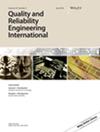基于贝叶斯 GPR 的风力涡轮机叶片概率疲劳寿命评估方法(含俯仰角影响
IF 2.8
3区 工程技术
Q3 ENGINEERING, INDUSTRIAL
引用次数: 0
摘要
大型风力涡轮机叶片的疲劳行为因其复杂的结构和运行环境而具有复杂性和随机性。考虑到风速、材料力学特性、桨距角和叶层厚度等不确定性因素,本文主要研究风电叶片的概率疲劳寿命评估方法。为了提高风力涡轮机叶片随机疲劳行为分析的效率,采用了单向流固耦合(UFSC)和双向流固耦合(BFSC)分析方法来分析随机响应。然后,结合高斯过程回归(GPR)和贝叶斯更新建立了风电叶片的随机疲劳行为预测模型。在此基础上,提出了修正的 S-N 曲线公式,并利用修正的 S-N 曲线分析了风电叶片的疲劳寿命,并与三参数 Weibull 模型进行了比较。结果表明,所提出的疲劳寿命评估方法具有更好的准确性。所提出的概率疲劳寿命评估方法精度高、效率高,有利于风电叶片的疲劳可靠性设计。本文章由计算机程序翻译,如有差异,请以英文原文为准。
A probabilistic fatigue life assessment method for wind turbine blade based on Bayesian GPR with the effects of pitch angle
The fatigue behavior of large wind turbine blades is complex and stochastic due to their complex structure and operating environment. This paper focuses on developing a probabilistic fatigue life assessment method for wind turbine blades considering the uncertainties from wind velocity, material mechanical properties, pitch angle, and layer thickness. To improve the efficiency of stochastic fatigue behavior analysis of wind turbine blade, unidirectional fluid‐structure coupling (UFSC) and bidirectional fluid‐structure coupling (BFSC) analysis are employed to analyze the stochastic response. Then, Gaussian process regression (GPR) and Bayesian updating are combined to establish the stochastic fatigue behavior prediction model for wind turbine blade. On this basis, a modified S‐N curve formulation is proposed, and the fatigue life of wind turbine blade is analyzed by the modified S‐N curve and compared with the three‐parameter Weibull model. The results indicate that the proposed method for fatigue life assessment has better accuracy. The proposed probabilistic fatigue life assessment method with high accuracy and high efficiency, which is beneficial for the fatigue reliability design of wind turbine blades.
求助全文
通过发布文献求助,成功后即可免费获取论文全文。
去求助
来源期刊
CiteScore
4.90
自引率
21.70%
发文量
181
审稿时长
6 months
期刊介绍:
Quality and Reliability Engineering International is a journal devoted to practical engineering aspects of quality and reliability. A refereed technical journal published eight times per year, it covers the development and practical application of existing theoretical methods, research and industrial practices. Articles in the journal will be concerned with case studies, tutorial-type reviews and also with applications of new or well-known theory to the solution of actual quality and reliability problems in engineering.
Papers describing the use of mathematical and statistical tools to solve real life industrial problems are encouraged, provided that the emphasis is placed on practical applications and demonstrated case studies.
The scope of the journal is intended to include components, physics of failure, equipment and systems from the fields of electronic, electrical, mechanical and systems engineering. The areas of communications, aerospace, automotive, railways, shipboard equipment, control engineering and consumer products are all covered by the journal.
Quality and reliability of hardware as well as software are covered. Papers on software engineering and its impact on product quality and reliability are encouraged. The journal will also cover the management of quality and reliability in the engineering industry.
Special issues on a variety of key topics are published every year and contribute to the enhancement of Quality and Reliability Engineering International as a major reference in its field.

 求助内容:
求助内容: 应助结果提醒方式:
应助结果提醒方式:


